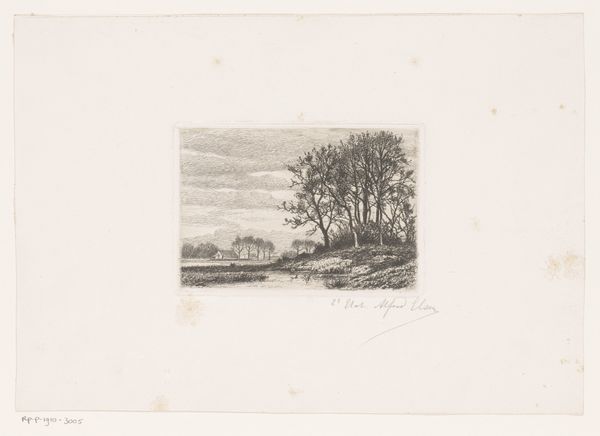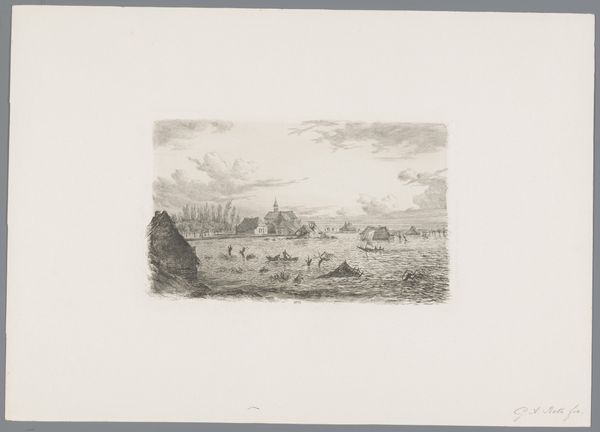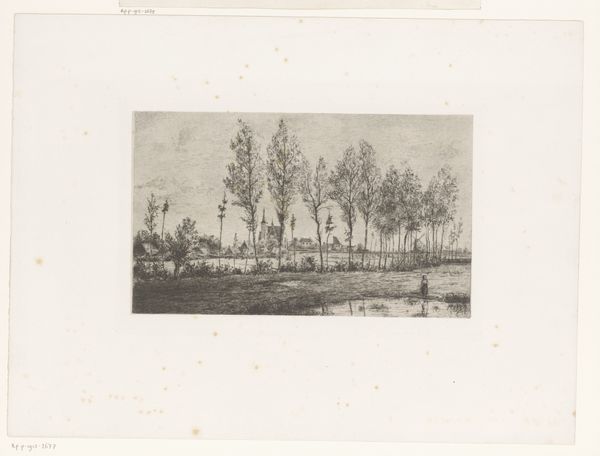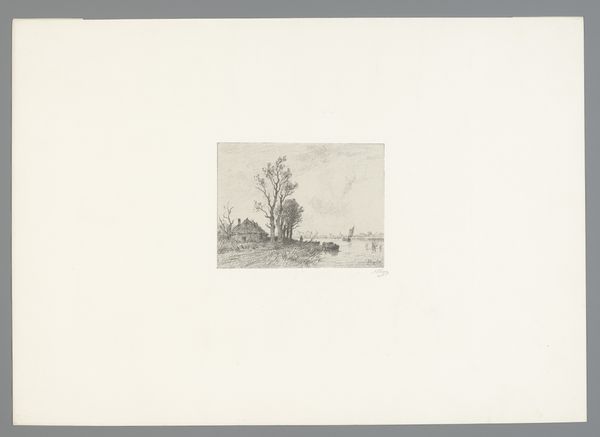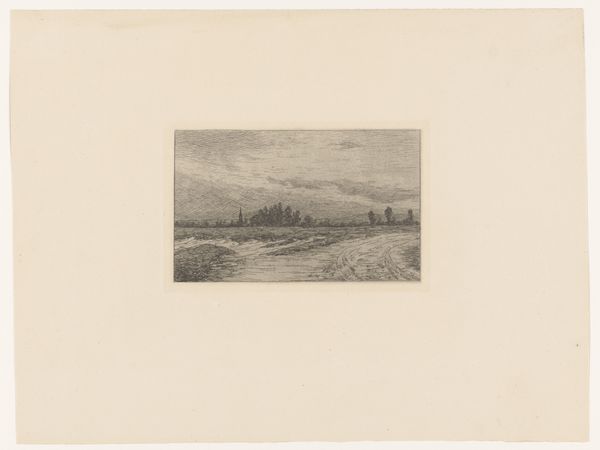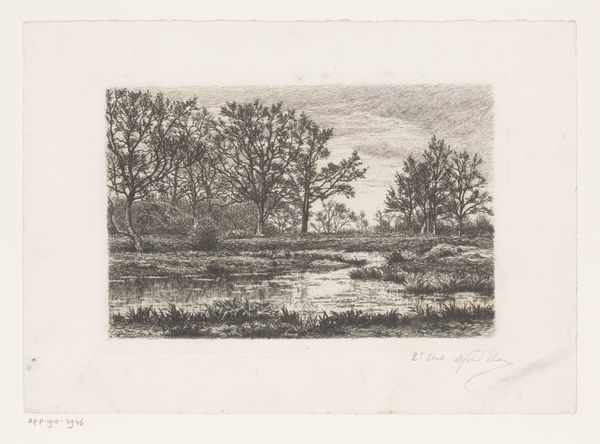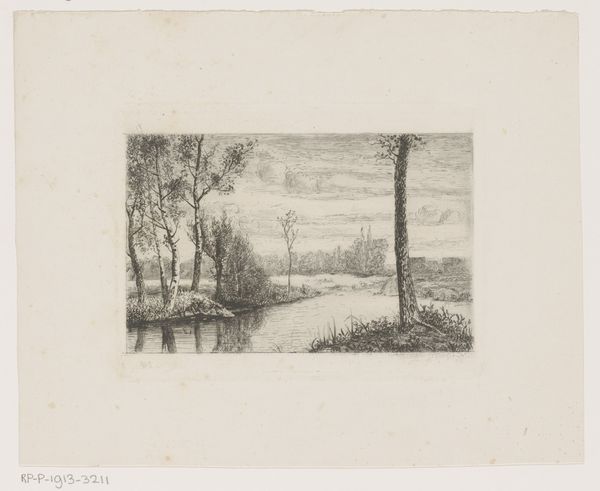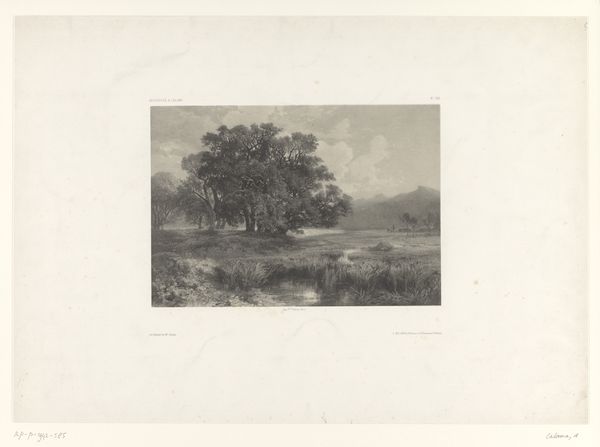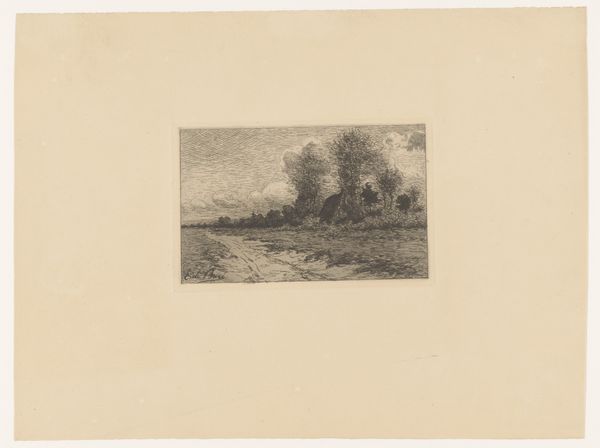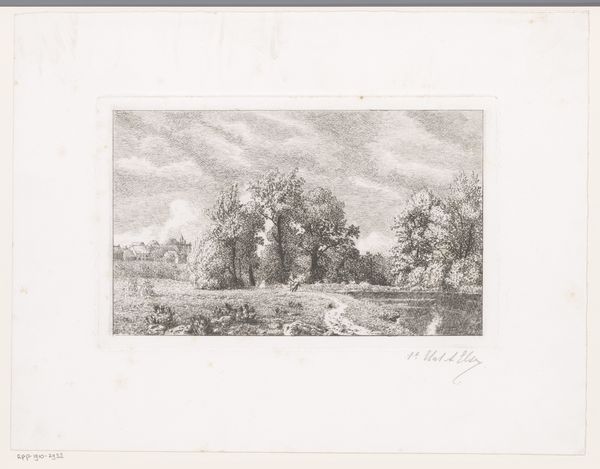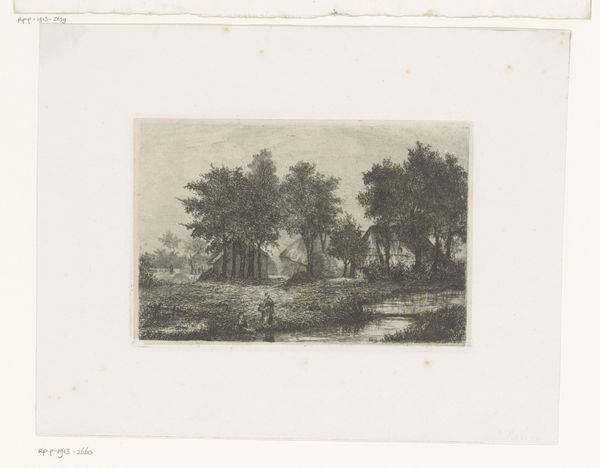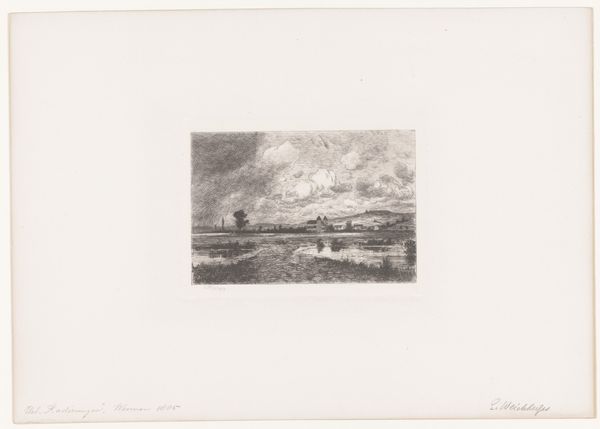
print, etching
# print
#
etching
#
landscape
#
realism
#
monochrome
Dimensions: height 300 mm, width 422 mm
Copyright: Rijks Museum: Open Domain
Editor: So, this is Johann Wilhelm Kaiser’s "Doorgebroken dijk bij Opheusden, 1855," an etching from 1855 at the Rijksmuseum. There's this really quiet, somber feeling to it. It's almost like the landscape itself is mourning something. What do you see in this piece? Curator: I see a stark reminder of the power of nature and humanity's vulnerability within it. Look closely – this isn’t just a landscape; it’s a document of environmental trauma. Consider the social implications of a breached dike in 1855. This wasn't just water; it was potential famine, displacement, and economic devastation for the rural population. Who would be most affected by this disaster, do you think? Editor: Probably the poorer communities, right? The people most dependent on the land and least able to recover from such a loss. Curator: Precisely. Kaiser, through the stark realism of the etching, highlights the unequal distribution of suffering. The flooded landscape becomes a visual metaphor for the precariousness of life for marginalized communities. Consider the composition. The church on the far left is small, not nearly as noticeable as the consequences of nature's force. What do you make of this emphasis? Editor: It makes me think about how sometimes institutions fail to protect the people. The focus is all on what has happened and those working or just present. Curator: Exactly! And, to that end, are we reckoning with the contemporary resonances? Who today are the most vulnerable to climate disasters, and are the art-world elites sufficiently attentive to the ongoing relationship between art and social justice? Editor: This has shifted how I will engage with landscapes going forward, considering their historical impact on inhabitants. Curator: Indeed. Art allows us to reflect and catalyze awareness.
Comments
No comments
Be the first to comment and join the conversation on the ultimate creative platform.
